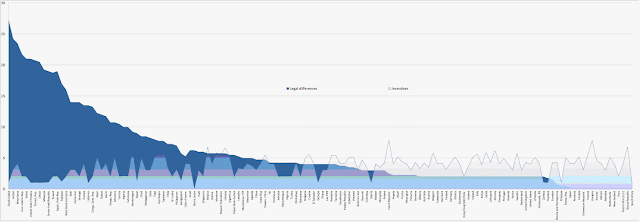Across the world, gender inequalities are large and persistent. We have inequalities in basic human rights, in control over economic resources (land, finance, information, earnings and employment, to name a few) and, of course, in power in the public and private spheres. There other forms of inequality which are more difficult to measure, such as access to joint income and assets within the household and those associated with the widespread prevalence of various forms of violence against women. Amartya Sen is surely right in stating that reducing these gender inequalities would go a long way toward empowering women and enhancing her well-being.
We should take some encouragement from two noticeable trends over the past several decades. One is greater recognition that the subjugation of women has led to a whole range of social ills and dysfunctions. The other is that moving toward greater gender equality need not be seen as a zero-sum game, implying loss for men. Rather, gender equality is about evolving to a stage where being born a boy or a girl no longer determine one’s rights and responsibilities, or whether one will have the opportunity to develop one’s human potential.
The recently released World Bank report Women, Business and the Law (wbl.worldbank.org) provides unique insights into the state of gender inequality in 143 countries accounting for 98% of the world’s population. The report looks at all the relevant laws in a country to document the many ways in which governments often use the law to discriminate against women in some way, to shape or limit the opportunities available to them, to create a legal environment that place her at a disadvantage in terms of her ability to meaningfully contribute to the economy. In many countries the law can give control of household assets to the husband, preventing the wife from utilizing those assets as collateral to access the financial system. The law can impose restrictions on decision-making or mobility, requiring women permission from their husbands to work or to travel. It can impose limits on working hours or the types of industries she can work in, excluding her from major sectors of the economy and widening the gender gap in pay. In a large number of countries the law designates husbands as head of household, which means they control key decisions, such as choosing the family residence or administering marital assets.
By counting the number of ways in which the law introduces some form of disadvantage to women across 47 different areas, the report provides a goldmine of insights into the global state of gender equality before the law. Here is a brief list of some of the salient results:
- Of the 143 countries covered, there are only 15 where the law establishes no differentiations between men and women. In 28 countries, there are at least 10 such restrictions, sometimes many more. Most of these countries are in the Middle East and North Africa and in Sub-Saharan Africa.
- In 79 countries the laws restrict the types of jobs women can do. In Russia there are 456 jobs which are proscribed to women. A kind of well-meaning paternalism on the part of those who made these rules seems to be the prevalent attitude behind such restrictions, the overwhelming majority of which no longer make sense in light of technological changes and changes in attitudes.
- The greater the number of restrictions in a country, the lower the female labor force participation rates and the lower the number of firms owned and run by women.
- Where governments also implement policies that make it easier for women to work (such as paid maternity leave, legal quotas for women in parliament, corporate boards, local governments, and so on), Gini coefficients are lower, meaning income inequality is lower.
- Countries that have established quotas for women’s participation in parliament have higher female labor force participation rates and will tend to prioritize expenditures to areas that are more directly relevant to social welfare and to women’s needs.
Economies with more restrictions also tend to provide fewer incentives
While remarkable progress has been made in recent decades in gradually dismantling many of the restrictions embedded in the law—with, encouragingly, the most progress being made in Sub-Saharan Africa—it remains the case that in too many countries across the world the law is still being used to hold women back, to silence their voices and limit their actions, imposing large tangible costs on the economy linked to those constraints on women’s freedom. Gender equality is important not only for fairness and equity, but also for economic efficiency and is at the center of creating a more prosperous world.
Gender equality also has a human and ethical dimension. This was profoundly understood by Lucretia Mott, an American Quaker, abolitionist, and women’s rights activist who in 1849 wrote: “Let woman then go on–not asking favors, but claiming as a right the removal of all hindrances to her elevation in the scale of being–let her receive encouragement for the proper cultivation of all her powers, so that she may enter profitably into the active business of life.”
